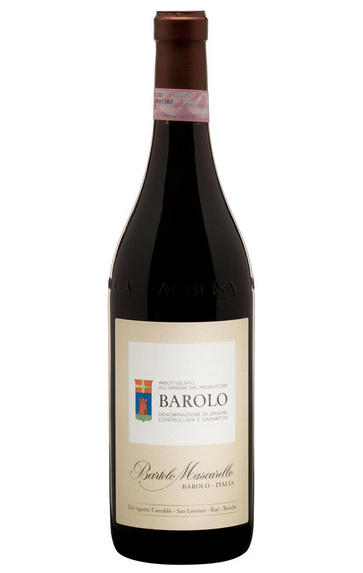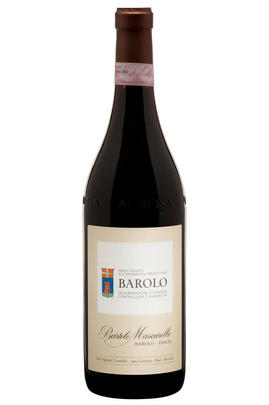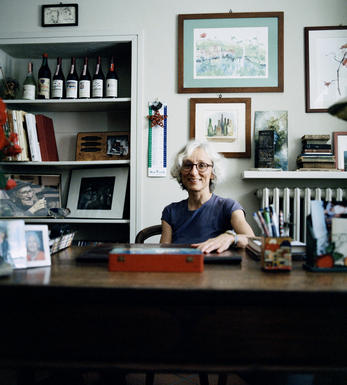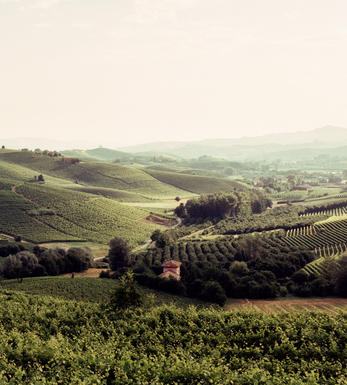
2016 Barolo, Bartolo Mascarello, Piedmont, Italy

Critics reviews
Drink 2026-2060
Monica Larner, robertparker.com (Jul 2020)
About this WINE

Cantina Bartolo Mascarello
Cantina Mascarello Bartolo remains one of the most revered Barolo wine-making domaines. Founded in 1918, its reputation was secured by the late great Bartolo Mascarello and since 2005 by his daughter Maria-Teresa Mascarello, whose first vintage was in 1993.
The 5 hectare domaine lies in the Barolo village on prime sandy calcareous clay Tortonian soils, with the vineyards of Cannubi, San Lorenzo, Rue, & Rocche del Annunziata (La Morra) at its heart. Only one Barolo wine is made, a blend of all the crus, along with some Dolcetto and Barbera.
The style remains staunchly traditional. Vinification takes place in fifty year old cement & wooden cuves, without recourse to yeast or temperature control. The Barolo is aged for approx. 3 years in 25 hl Slavonian botte (all recently replaced), followed by 1 year in bottle prior to release.
Maria-Teresa believes quite simply that the key to great wine is to produce the healthiest, ripest fruit possible. She would also describe herself as (bio) logic & (bio) dynamic! Berrys are fortunate to have a tiny share of the 1,250 cases Barolo produced annually.

Barolo
Located due south of Alba and the River Tanaro, Barolo is Piedmont's most famous wine DOCG (Denominazione di Origine Controllata e Garantita), renowned for producing Italy's finest red wines from 100 percent Nebbiolo.
Its red wines were originally sweet, but in 1840 the then extant Italian monarchy, the House of Savoy, ordered them to be altered to a dry style. This project was realised by French oenologist Louis Oudart, whose experience with Pinot Noir had convinced him of Nebbiolo's potential. The Barolo appellation was formalised in 1966 at around 1,700 hectares – only a tenth of the size of Burgundy, but almost three times as big as neighbouring Barbaresco.
Upgraded to DOCG status in 1980, Barolo comprises two distinct soil types: the first is a Tortonian sandy marl that produces a more feminine style of wine and can be found in the villages of Barolo, La Morra, Cherasco, Verduno, Novello, Roddi and parts of Castiglione Falletto. The second is the older Helvetian sandstone clay that bestows the wines with a more muscular style. This can be found in Monforte d'Alba, Serralunga d'Alba, Diano d'Alba, Grinzane Cavour and the other parts of Castiglione Falletto. Made today from the Nebbiolo clones Lampia, Michet and Rosé, Barolo has an exceptional terroir with almost every village perched on its own hill. The climate is continental, with an extended summer and autumn enabling the fickle Nebbiolo to achieve perfect ripeness.
Inspired by the success of modernists such as Elio Altare, there has been pressure in recent years to reduce the ageing requirements for Barolo; this has mostly been driven by new producers to the region, often with no Piedmontese viticultural heritage and armed with their roto-fermenters and barriques, intent on making a fruitier, more modern style of wine.
This modern style arguably appeals more to the important American market and its scribes, but the traditionalists continue to argue in favour of making Barolo in the classic way. They make the wine in a mix of epoxy-lined cement or stainless-steel cuves, followed by extended ageing in 25-hectoliter Slavonian botte (barrels) to gently soften and integrate the tannins. However, even amongst the traditionalists there has been a move, since the mid-1990s, towards using physiologically (rather than polyphenolically) riper fruit, aided by global warming. Both modernist and traditional schools can produce exceptional or disappointing wines.
Recommended traditionalist producers:
Giacomo Borgogno, Giacomo Conterno, Bruno Giacosa, Elio Grasso, Marcarini, Bartolo Mascarello and Giuseppe Mascarello.
Recommended nmdernist producers:
Azelia, Aldo Conterno, Luciano Sandrone, Paolo Scavino and Roberto Voerzio

Nebbiolo
Nebbiolo is the grape behind the Barolo and Barbaresco wines and is hardly ever seen outside the confines of Piedmont. It takes its name from "nebbia" which is Italian for fog, a frequent phenomenon in the region.
A notoriously pernickety grape, it requires sheltered south-facing sites and performs best on the well-drained calcareous marls to the north and south of Alba in the DOCG zones of Barbaresco and Barolo.
Langhe Nebbiolo is effectively the ‘second wine’ of Piedmont’s great Barolo & Barbarescos. This DOC is the only way Langhe producers can declassify their Barolo or Barbaresco fruit or wines to make an early-drinking style. Unlike Nebbiolo d’Alba, Langhe Nebbiolo can be cut with 15% other red indigenous varieties, such as Barbera or Dolcetto.
Nebbiolo flowers early and ripens late, so a long hang time, producing high levels of sugar, acidity and tannins; the challenge being to harvest the fruit with these three elements ripe and in balance. The best Barolos and Barbarescos are perfumed with aromas of tar, rose, mint, chocolate, liquorice and truffles. They age brilliantly and the very best need ten years to show at their best.


Buying options
Add to wishlist
Description
This is the stuff of dreams. Tasted so young, I did a lot of coaxing to nudge the wine along, thanks to a double decant and a few extra hours in an open bottle. I tasted both samples I had over the course of a few weeks. Those efforts served well, but the wine remains packed tight and full of nervous energy regardless, indicating that its true potential won't be seen for another 10 or 20 years, or likely more. The Bartolo Mascarello 2016 Barolo is a true icon of the vintage. The approach is elongated and silky, like lifting honey from a jar. The aromas are chiseled and focused with wild berry, licorice, candied orange peel, campfire ash, rusted iron, crushed graphite and pencil shaving. The wine's personality is downplayed, elegant and demure in one tasting but exuberant and expressive in the next. The tannins show snap and crunch, indicating they will drive the wine forward over many years of cellar age. This is one of those rare wines that is poised to improve with each increment of time. Structurally, it is perfect. If we were to create a template for an aspirational Barolo, this would be it.
Drink 2026-2060
Monica Larner, robertparker.com (Jul 2020)
wine at a glance
Delivery and quality guarantee